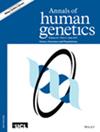The systematic identification of survival-related alternative splicing events and splicing factors in glioblastoma
Abstract
Glioblastoma multiforme (GBM) is the most common and aggressive primary brain tumor, making it one of the most life-threatening human cancers. Nevertheless, research on the mechanism of action between alternative splicing (AS) and splicing factor (SF) or biomarkers in GBM is limited. AS is a crucial post-transcriptional regulatory mechanism. More than 95% of human genes undergo AS events. AS can diversify the expression patterns of genes, thereby increasing the diversity of proteins and playing a significant role in the occurrence and development of tumors. In this study, we downloaded 599 clinical data and 169 transcriptome analysis data from The Cancer Genome Atlas (TCGA) database. Besides, we collected AS data about GBM from TCGA-SpliceSeq. The overall survival (OS) related AS events in GBM were determined through least absolute shrinkage and selection operator (Lasso) and Cox analysis. Subsequently, the association of these 1825 OS-related AS events with patient survival was validated using the Kaplan–Meier survival analysis, receiver operating characteristic curve, risk curve analysis, and independent prognostic analysis. Finally, we depicted the AS–SF regulatory network, illustrating the interactions between splicing factors and various AS events in GBM. Additionally, we identified three splicing factors (RNU4-1, SEC31B, and CLK1) associated with patient survival. In conclusion, based on AS occurrences, we developed a predictive risk model and constructed an interaction network between GBM-related AS events and SFs, aiming to shed light on the underlying mechanisms of GBM pathogenesis and progression.

 求助内容:
求助内容: 应助结果提醒方式:
应助结果提醒方式:


